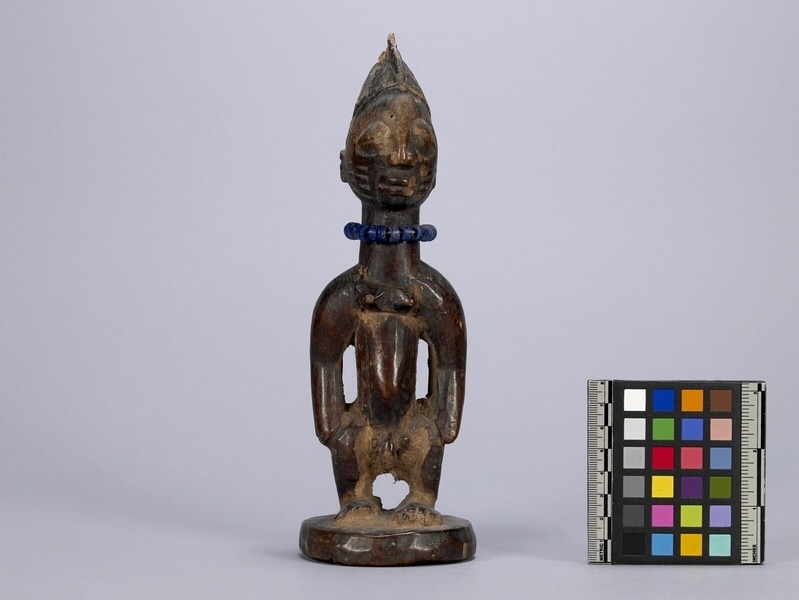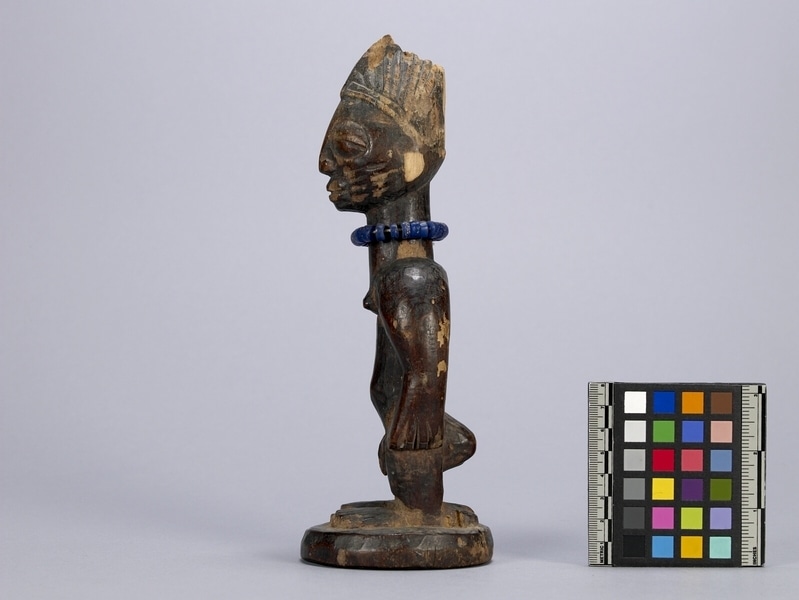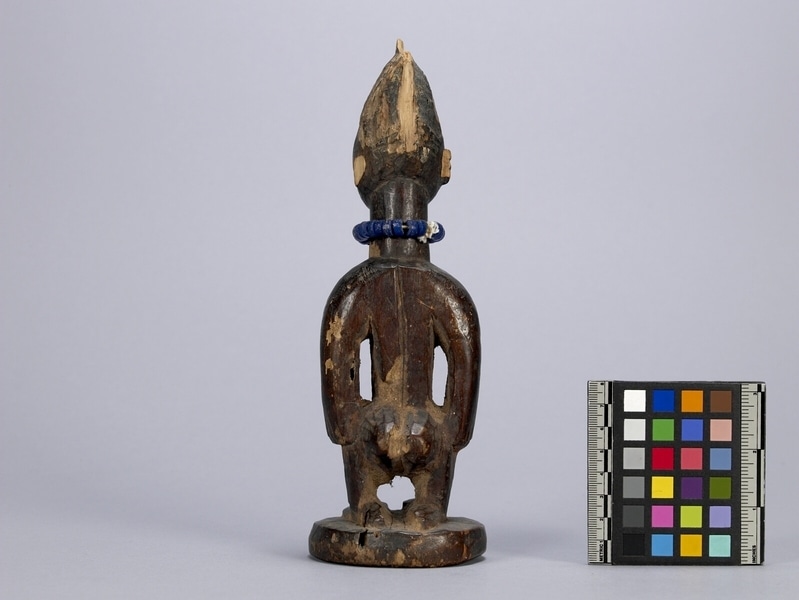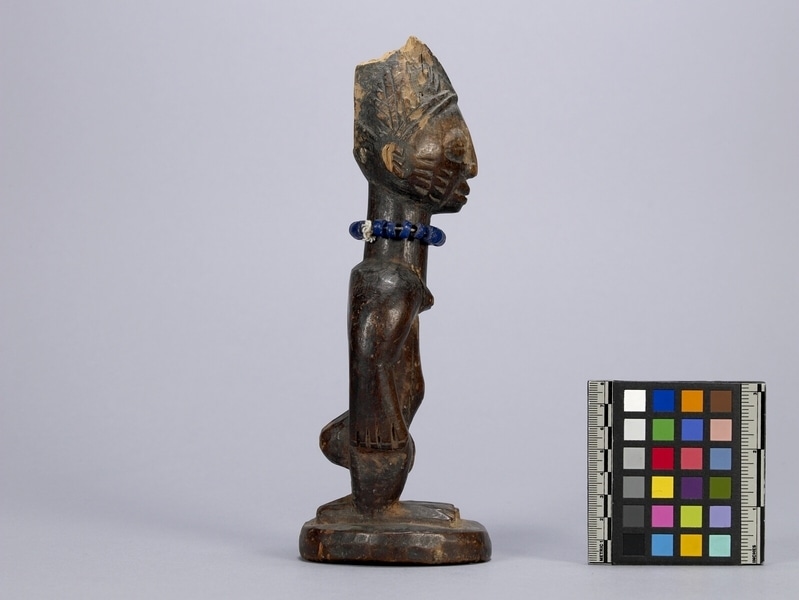Figure Item Number: Af496 from the MOA: University of British Columbia




Description
Standing wood figure (ibeji) on oval base. Male figure with long neck; trunk and arms are on short, stocky legs with long feet. Arms at the sides. Has genitalia, protruding stomach, nipples, and buttocks. Blue lapis lazuli(?) beads on cotton string around neck. Carved facial features in relief of large closed ovoid eyes and eight incised notches on each cheek. Wearing pointed headdress with crest front to back and patterning of incised lines; headdress is coloured with indigo pigment. Carved wood piece with dark brown patina.
History Of Use
Based on the sacred duality of "twoness" (èjìwàpò) found in nature, such as life/death, right/left, male/female, twins are understood as bringers of wealth and blessings to their family if they are satisfied, or misfortune if they are dissatisfied. As a result, living twins are treated with a high degree of respect and favouritism. When a twin, or both, dies the parents consult a diviner (babalawo), who communicates the desires of the deceased; small commemorative wooden figures (ère ìbejì) are carved to honour and represent them. Yorubas believe that twins share a soul, so the family was to treat the figure as they would if the twin was still physically present. As a result, the twin was fed, washed and cared for. Rather than realistic representations, ère ìbejì are idealized forms. They are often decorated with cowrie shells, beaded or metal bracelets, necklaces, and anklets, and cosmetics, such as osun (camwood powder), indigo, and efun (white chalk). By the mid-19th century, Christianity and Islam began to influence the design of ère ìbejì. Yoruba Muslims sometimes commissioned ere ibeji with carved torah, or leather packets containing quotations from the Quran, while Yoruba Christians incorporated Virgin Mary medals or crucifixes. In the mid-20th century, manufactured or plastic dolls began to replace the traditional ère ìbejì. Today, these dolls, in addition to the use of photographs, continue to sustain the ère ìbejì tradition.
Iconographic Meaning
The facial scarification on both cheeks (ila, or “lineage face mark”) indicates a specific community to which the represented deceased twin belongs.
Specific Techniques
The indigo pigment would have come from the indigo plant or with laundry blueing imported from England.
Item History
- Made in Nigeria before 1965
- Collected during 1965
- Owned by Saja Tunkara before 1965
- Owned by Alan R. Sawyer and Erika H. Sawyer before December 19, 1980
- Received from Alan R. Sawyer (Donor) and Erika H. Sawyer (Donor) on December 19, 1980
What
- Name
- Figure
- Identification Number
- Af496
- Type of Item
- figure
- Material
- wood, lapis lazuli mineral ?, cotton fibre and indigo pigment
- Manufacturing Technique
- carved, incised and strung
- Overall
- height 25.0 cm, width 8.0 cm, depth 9.0 cm
Who
- Culture
- Yoruba
- Previous Owner
- Saja Tunkara, Alan R. Sawyer and Erika H. Sawyer
- Received from
- Alan R. Sawyer (Donor) and Erika H. Sawyer (Donor)
Where
- Holding Institution
- MOA: University of British Columbia
- Made in
- Nigeria
When
- Creation Date
- before 1965
- Collection Date
- during 1965
- Ownership Date
- before 1965 and before December 19, 1980
- Acquisition Date
- on December 19, 1980
Other
- Item Classes
- carvings & sculpture
- Condition
- fair
- Accession Number
- 0691/0007